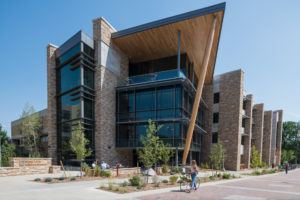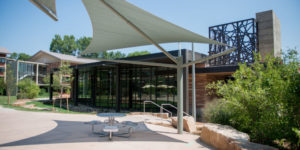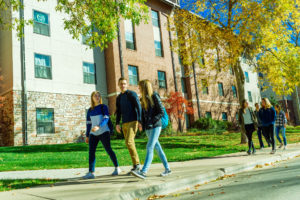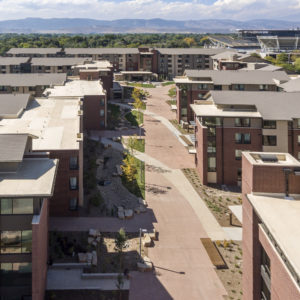

Growth management
More than a decade ago, when Colorado State University’s enrollment was forecast to begin increasing, intentional planning began to accommodate every facet of potential growth. The Master Plan Committee prepared for everything, from new building proposals, open spaces, transit, transportation and parking down to sidewalks and bikeways.
The result of CSU’s meticulous planning and implementation has been an incredible transformation of the campus, not only accommodating the decade of enrollment growth but positioning the university to serve generations of Rams to come. This year, CSU welcomed 5,423 students in its record-breaking freshman class while marking 11 consecutive years of record enrollment in figures released Sept. 24.
“The last decade of history at Colorado State University has been marked by steady enrollment growth paired with investments in buildings and infrastructure not seen on campus since the 1960s,” said Fred Haberecht, university master planner. “To support CSU’s enrollment growth, the university has invested over $1.4 billion over the past eight years. This investment has been across the board, including new academic buildings, classrooms, research laboratories, parking structures, residence halls, apartments, athletic and recreation facilities.”

And in 2017, CSU opened Canvas Stadium, a multi-purpose, state-of-the-art facility designed to be used year-round. CSU’s new football home also boasts 80,000 square feet of space for alumni, academics and student advising.
Housing and dining
This year, CSU saw a record number of students living on campus, with roughly 6,400 in residence halls and more than 1,700 in university apartments, totaling an estimated 8,100 students living on campus.
Making modern residence halls and dining centers part of campus also has been a key component of welcoming the growing population. Over the past decade, Housing & Dining Services has added new residence halls, expanded and renovated existing halls, and added new apartment buildings, offering a rich campus living experience for CSU students of all ages. This change has been an intentional part of encouraging students to live on campus to help accommodate the projected enrollment increases.

“CSU has been a leader among campuses everywhere in creating an entire residential experience for our growing student population,” said Mari Strombom, executive director of Housing & Dining Services at CSU. “Housing & Dining Services has been able to manage growth in both campus housing and dining needs due to our strong partnerships in our units and across campus with the Office of Admissions, Facilities Management, Student Affairs and University Operations.”
This year, CSU forged a new area under Housing & Dining to further that concept. University Housing – which combines Residence Life and Apartment Life – is a new version of on-campus housing that better meets the needs of students both today and in the future. University Housing creates a more seamless experience between the residence halls and apartments on campus.
Residence halls and apartments feature designated classroom space, integrated indoor and outdoor study spaces, a bike repair room, and gathering spaces around fire pits and amphitheaters that enhance engagement and help build a sense of community. On-campus living represents innovative living and learning communities at their best.
CSU Housing & Dining is continuing to plan for and stay at the forefront of students’ needs.

“We are in the process of selecting a team that will help us design new residence halls and a new dining facility that will be called Meridian Village,” said Strombom. “We are currently projecting a net gain of 600 beds when this project is complete. We hope to have 300 new beds available for fall 2021 and the remainder of the beds online by fall 2023.”
Sustainable growth
And while CSU has seen steady growth over the past decade, the university’s hometown of Fort Collins also has seen growth over that same time period.
“This year has been a great year for incoming freshman, but seen in context, is part of steady sustainable growth over the last 10 years,” said Haberecht. “Full-time resident instruction enrollment has grown approximately 1.5 percent year over year for the past 10 years, increasing enrollment by approximately 3,600 students. This rate of growth is slightly less than the overall growth experienced by the City of Fort Collins over the same period.”